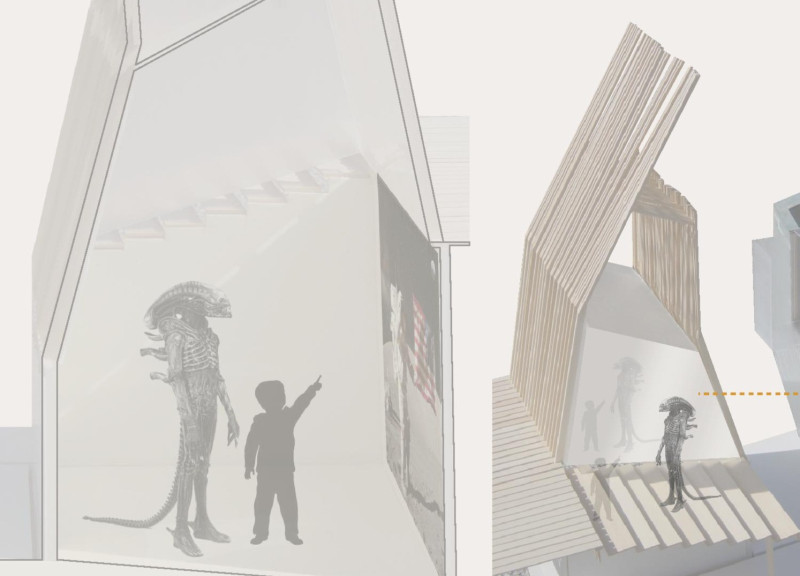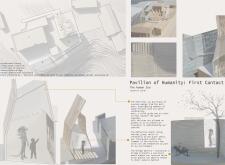5 key facts about this project
The Pavilion of Humanity: First Contact is designed to facilitate interactions between humans and an extraterrestrial species. It sits on Earth and aims to create an environment that celebrates significant achievements in human history while recognizing the value of failures. This project serves as a platform for exploration and understanding.
Pavilions of Success
Six pavilions extend from a central deck, each celebrating key moments in human history. These structures are thematic spaces that highlight important milestones, inviting visitors to engage with humanity's narrative. By addressing both successes and failures, the Pavilion encourages reflection on the complexities of human experiences, helping visitors appreciate the shared history.
Child Guides
Children are designated as guides for alien visitors, a unique choice that emphasizes their unfiltered perspective. They bring innocence and curiosity to their interactions, promoting a direct exchange of ideas between species. In this role, children allow for authentic exploration of human culture, breaking down traditional barriers and fostering understanding.
Reflective Shell
The Pavilion features a reflective shell made of two-way glass. This design serves two purposes: the exterior reflects the environment, while the interior is translucent, allowing visitors to see their own reflections. This element enhances self-awareness among alien guests, creating a dialogue about coexistence and connection through shared experiences within the space.
Bridge and Courtyard
A bridge crosses a courtyard designed for social interaction. This courtyard is a space where human visitors can engage freely while offering a designated observational area for alien guests. The design encourages both community interaction and thoughtful observation, helping to foster understanding and exploration among different cultures.
The Pavilion's design elements come together to create an environment that allows visitors to reflect on humanity. It offers a blend of celebration and examination, making each visit an opportunity for deeper engagement with the human experience.



















































